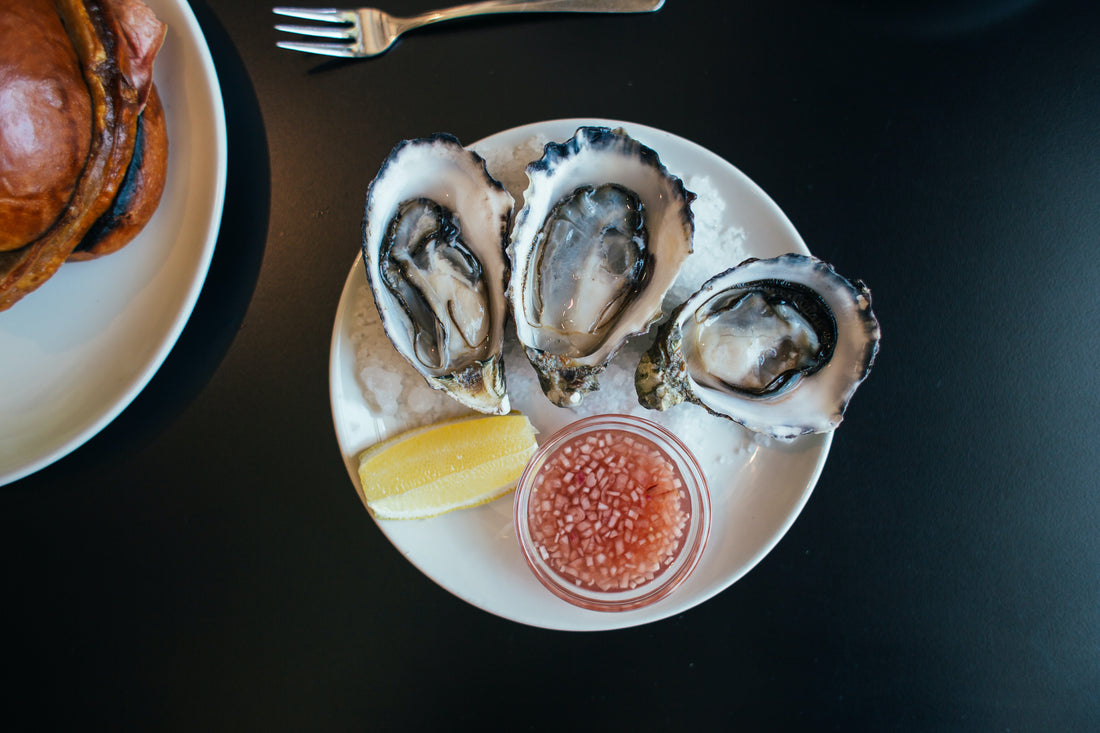Tasting oysters is a sensory experience that can be both exciting and intriguing, especially for those new to these briny delicacies. Oysters are often described as having complex flavors and textures that can vary depending on their origin. In this guide, we'll explore how to taste oysters properly to appreciate their nuances fully.
**1. Choose Fresh Oysters:**
The first step in tasting oysters is to ensure you have access to the freshest ones available. Look for reputable seafood markets or restaurants known for their quality seafood. Fresh oysters should be tightly closed or close when tapped. An open oyster is a sign that it may be dead and potentially unsafe to eat.
**2. Gather the Essentials:**
Before you begin tasting, gather the necessary tools and accompaniments:
- Oysters: Start with a variety of oysters from different regions to compare flavors.
- Oyster knife: Used for shucking the oysters, you may also need this to separate the oyster from its shell.
- Lemon wedges: Provide a bright and citrusy contrast to the briny oysters.
- Sauces and condiments: Common options include mignonette sauce, cocktail sauce, and horseradish.
- A platter with crushed ice: Keep the oysters chilled throughout the tasting.
**3. Shuck the Oysters:**
If you're confident in your shucking skills, you can shuck the oysters yourself. However, many prefer to have an experienced shucker at a restaurant or fish market handle this step. Shucking requires a special knife and technique to safely open the oyster shells while preserving the integrity of the oyster meat. If you're new to shucking, consider seeking guidance from a professional before attempting it yourself.
**4. Inspect the Oysters:**
Once the oysters are shucked, take a moment to inspect them. Look for any broken shell fragments or debris that may have made its way into the oyster. Gently remove any foreign particles with a knife or small fork.
**5. Presentation Matters:**
Place the freshly shucked oysters on a platter filled with crushed ice. A bed of rock salt is also commonly used. Arrange them attractively, as presentation can enhance the overall tasting experience.
**6. Observe the Oysters:**
Before tasting, take a moment to observe the oysters. Notice their shape, size, and color. Oysters can vary in appearance depending on their species and where they were harvested. Pay attention to any unique characteristics of each oyster.
**7. Smell the Oysters:**
Bring the oyster closer to your nose and take a gentle sniff. Oysters have a distinct and briny aroma that can give you a hint of their flavor. The smell should be fresh and oceanic, not overly fishy or unpleasant.
**8. Savor the Flavor:**
Now, it's time to taste the oysters. Here's how to do it:
- **First Bite:** Place the oyster on your tongue and let it sit for a moment. The initial sensation should be a burst of brine, followed by the oyster's flavor profile.
- **Chew Gently:** Chew the oyster gently to release its flavors. Oysters have a tender and slightly slippery texture.
- **Swallow Slowly:** As you swallow, pay attention to the lingering flavors and how they evolve.
**9. Note the Flavor Profile:**
Oysters come in a wide range of flavor profiles, influenced by their origin, water temperature, salinity, and the specific species. Here are some common flavor notes you may encounter:
- **Briny:** A strong oceanic flavor, reminiscent of seawater.
- **Sweet:** A mild, sweet taste often found in oysters from colder waters.
- **Creamy:** Some oysters have a rich and velvety texture, with a hint of creaminess.
- **Mineral:** This can be described as a metallic or coppery taste, often found in oysters from warmer waters.
- **Vegetal:** Some oysters have hints of cucumber, grass, or algae in their flavor profile.
- **Umami:** Oysters can have a savory and meaty umami quality.
**10. Compare and Contrast:**
If you're tasting multiple oysters, take the opportunity to compare and contrast their flavors. Notice the differences in salinity, sweetness, texture, and overall taste. This can be a fun and educational experience, helping you appreciate the diversity of oyster varieties.
**11. Enhance with Condiments:**
Experiment with different condiments to enhance your oyster tasting experience. Lemon wedges provide acidity, while mignonette sauce adds a touch of sweetness and acidity. Cocktail sauce and horseradish can provide a spicy kick if that's to your liking. Use condiments sparingly to avoid overpowering the oysters' natural flavors.
**12. Cleanse Your Palate:**
Between oysters, cleanse your palate with a sip of water or a neutral cracker to ensure you fully appreciate each oyster's distinct taste.
**13. Enjoy and Savor:**
Ultimately, tasting oysters is about savoring the experience. Take your time, savor the flavors, and enjoy the briny, fresh, and nuanced tastes that oysters have to offer.
Tasting oysters can be a delightful culinary adventure for seafood enthusiasts. By following these steps and paying attention to the oysters' appearance, aroma, and flavor, you can fully appreciate the diverse world of oysters and discover your preferences among the many varieties available. So, the next time you encounter a platter of fresh oysters, approach them with confidence and curiosity, and let your taste buds guide you on a flavorful journey.

